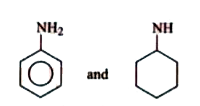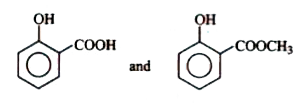Corms can be differentiated from rhizome in having
less conspicous buds
oblique growth
perennial life
circular nodes
The correct Answer is:4
To differentiate corms from rhizomes, we need to examine their structural and functional characteristics. Here’s a step-by-step breakdown:
1. Definition of Corms and Rhizomes:
- Corms are short, thick, and underground storage organs that serve as a means of vegetative reproduction.
- Rhizomes are elongated, horizontal underground stems that also serve for vegetative reproduction but have a different structure and growth pattern.
2. Structure:
- Corms are generally short and thick. They are compact and have a bulbous shape.
- Rhizomes are elongated and stumpy, which means they can grow horizontally and can be branched.
3. Condensation:
- Corms are highly condensed structures, which means they have a compact form.
- Rhizomes are rarely condensed and can be more elongated.
4. Branching:
- Corms are typically unbranched, meaning they do not produce side shoots.
- Rhizomes are branched, allowing them to spread out and form new plants.
5. Orientation:
- Corms usually grow in a vertical orientation.
- Rhizomes grow in a horizontal or oblique orientation.
6. Nodes:
- Corms have circular nodes. This is a distinguishing feature of corms.
- Rhizomes do not have circular nodes.
7. Buds:
- Corms possess conspicuous buds that are easily visible.
- Rhizomes have less conspicuous buds that are not as easily seen.
8. Lifespan:
- Corms typically have a short lifespan, lasting about 1 to 3 years.
- Rhizomes can be perennial, surviving for several years.
Conclusion:
Based on the characteristics discussed, the correct differentiation is that corms can be identified by having circular nodes, which is a unique feature compared to rhizomes.
- Corms are short, thick, and underground storage organs that serve as a means of vegetative reproduction.
- Rhizomes are elongated, horizontal underground stems that also serve for vegetative reproduction but have a different structure and growth pattern.
- Corms are generally short and thick. They are compact and have a bulbous shape.
- Rhizomes are elongated and stumpy, which means they can grow horizontally and can be branched.
- Corms are highly condensed structures, which means they have a compact form.
- Rhizomes are rarely condensed and can be more elongated.
- Corms are typically unbranched, meaning they do not produce side shoots.
- Rhizomes are branched, allowing them to spread out and form new plants.
- Corms usually grow in a vertical orientation.
- Rhizomes grow in a horizontal or oblique orientation.
- Corms have circular nodes. This is a distinguishing feature of corms.
- Rhizomes do not have circular nodes.
- Corms possess conspicuous buds that are easily visible.
- Rhizomes have less conspicuous buds that are not as easily seen.
- Corms typically have a short lifespan, lasting about 1 to 3 years.
- Rhizomes can be perennial, surviving for several years.
Based on the characteristics discussed, the correct differentiation is that corms can be identified by having circular nodes, which is a unique feature compared to rhizomes.
Topper's Solved these Questions
- MORPHOLOGY OF FLOWERINGPLANTS BOOK - VMC MODULES ENGLISHCHAPTER - MORPHOLOGY OF FLOWERINGPLANTS EXERCISE - IN-CHAPTER EXERCISE-C
10 Videos
- MORPHOLOGY OF FLOWERINGPLANTS BOOK - VMC MODULES ENGLISHCHAPTER - MORPHOLOGY OF FLOWERINGPLANTS EXERCISE - IN-CHAPTER EXERCISE-D
9 Videos
- MORPHOLOGY OF FLOWERINGPLANTS BOOK - VMC MODULES ENGLISHCHAPTER - MORPHOLOGY OF FLOWERINGPLANTS EXERCISE - IN-CHAPTER EXERCISE-A
10 Videos
- MINERAL NUTRITIONBOOK - VMC MODULES ENGLISHCHAPTER - MINERAL NUTRITIONEXERCISE - IMPECCABLE
55 Videos
- ORGANISMS & POPULATIONS BOOK - VMC MODULES ENGLISHCHAPTER - ORGANISMS & POPULATIONS EXERCISE - In - Chapter exercise C
10 Videos
Similar Questions
Knowledge Check
 Can be differentiated by : Acarbylamine reactionBH2SO4Cdiazotisation followed by β - naphtholDmustard oil reaction
Can be differentiated by : Acarbylamine reactionBH2SO4Cdiazotisation followed by β - naphtholDmustard oil reaction
Can be differentiated by :AFeCl3BNaOHCNaNO2+HClDFehling's solution Can be differentiated by : ANaOHBNa metalCNaHCO3DFeCl3
Can be differentiated by : ANaOHBNa metalCNaHCO3DFeCl3
Moss protonema can be differentiated from filamentous alga in
View SolutionRhizome can be differentiated from root in the presence of (a)Lateral bud (b)Root cap (c) Nodes (d) Endogenous branching mark the correct option
View SolutionFern rhizome is
View SolutionCollenchyma can be differentiated from parenchyma by
View Solution Can be differentiated by :
Can be differentiated by :
View Solution

 can be differentiated by
can be differentiated by